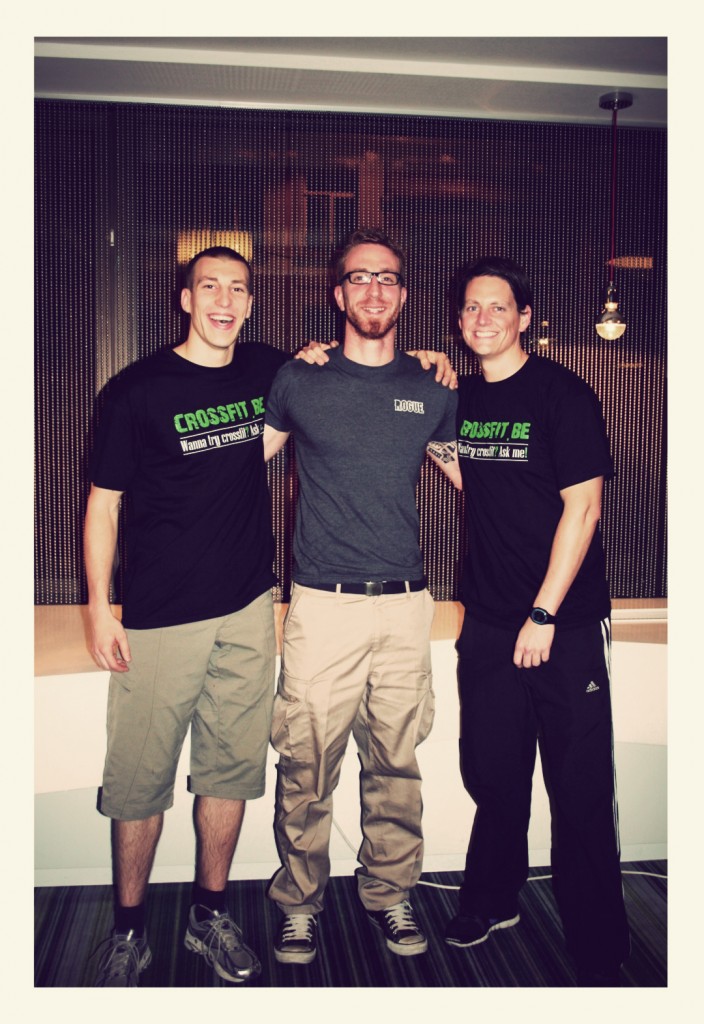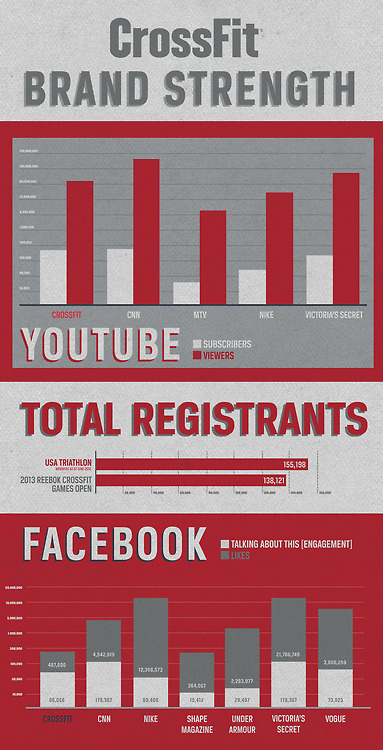
Thijs (CrossFit “Gym Project”), me (CrossFit Brussels) & Bert (CrossFit Antwerpen)
What is a « Community » ? In the CrossFit world, everyone is talking about the « community ». And, sometimes, some people are inclined to think that they are « more » in the community than others, that they do « more » for the community than others.
But what does that mean, a « Community » ?
Sociologists, as Lipiansky, define « Community » as a form of association, in which there is personal, functional and affective relations between members. It means that a « community » is more than a « group » or a « category », in which members only share some common characteristics. Being all CrossFitters on a limited territory (a country or a region) does not constitue a « community ».
Relations inside a community show affectivity and proximity. That’s the difference between the « community » and the « society », the classical distinction between « Gemeinschaft » (community) and « Gezellschaft » (society), by the German sociologist Tönnies. If the « community » is based on affectivity, the « society » is, in contrast, based on rationality (rules, common goals, etc.).
As Weber, an other famous sociologist, says, the communalization of social relationships is based on a sense of solidarity : the result of emotional or traditional attachments of the participants. In that sense again, the « community » seems more based on emotional and affectual link. That’s why he categorizes the spiritual brotherhood, the family, or the comradeship of a military unit as forms of community. That’s CrossFit. As Bert, from CrossFit Antwerpen told me : is there a better way to know someone than doing a workout side by side ?
And this picture above reflects for me what could be a « CrossFit Community » : when we can laugh together, when we have fun together, when we know each other, when we are happy to meet each other at events, when we send mails just to ask « how are you ? », « how is your gym », when we are becoming friends, and not just colleagues… That’s what I see on this picture.
Weber adds this point : « communalization » is, in the sense used here, normally the direct opposite of « struggle ». But, he says, this should not be allowed to mislead us into thinking that violence cannot be found in a community.
Why ? Because, we can think that a community (as CrossFit) is also a « Field », as defined by Bourdieu, in which there is struggle about the boundaries of the field : Who is inside, and Who is outside ? Just like in every artistic field : Who represents the real hip-hop ? Who is a traitor ? Who does real old-school hip-hop ? And who does pop music ? Who represents integrity ? And who is sold out to commercial music ? A field is always a place in which there is a struggle about the boundaries of the field.
But I really think that, at local level, we can build a real « community » based on affective links, comradeship and knowledge of each other. Psychologically, we all need to be integrated : a part of our identity is built on our participation to social groups. And the degree of our integration can be measured by the feeling of knowing other members of the group, to be able to identify them, and to be known by them. This also means that social media are a great tool to build that kind of community : adding each others on Facebook, sharing pictures on wich we identify each others, sharing links, keeping the contact between events, and all that things.
That’s what I see on this picture…
 Source : http://websmithblog.com/#/blog
Source : http://websmithblog.com/#/blog
